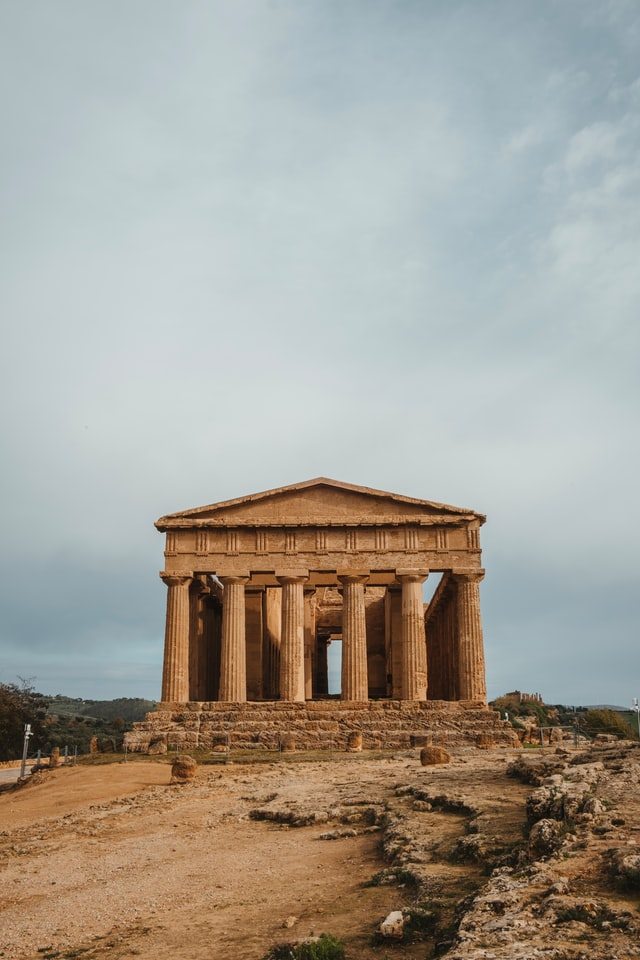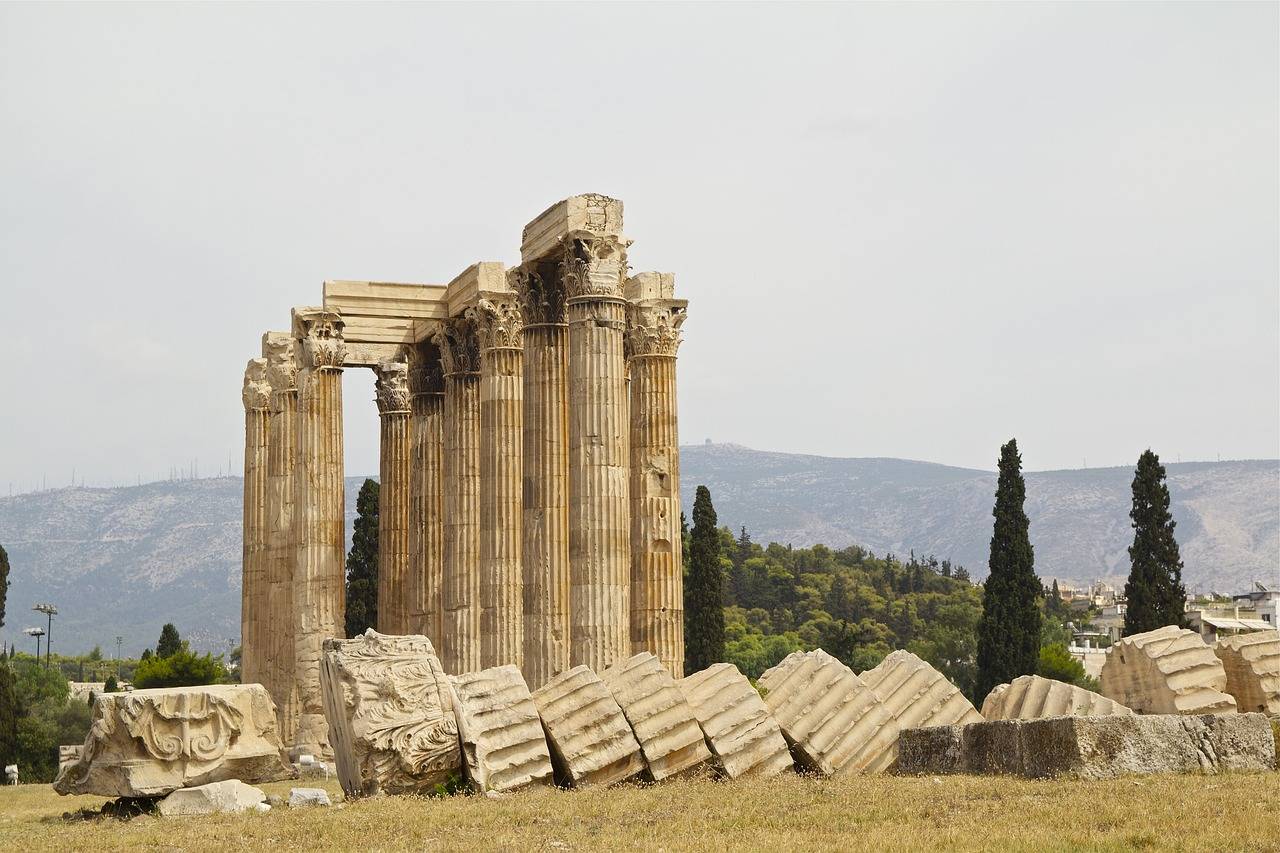Parthenon
Share this attraction
Back

Parthenon
Athens
Parthenon - the most important information
The Parthenon is a former temple on the Athenian Acropolis, Greece, dedicated to the goddess Athena, whom the people of Athens considered their patroness. It is the most important surviving building of Classical Greece, generally considered the zenith of the Doric order. Its decorative sculptures are considered some of the high points of Greek art. The Parthenon is regarded as an enduring symbol of Ancient Greece, democracy, and Western civilization, and one of the world's greatest cultural monuments.
History of the Parthenon
Construction started in 447 BC when the Delian League was at the peak of its power. It was completed in 438 BC, although decoration of the building continued until 432 BC. To the Athenians who built it, the Parthenon, and other Periclean monuments of the Acropolis, were seen fundamentally as a celebration of Hellenic victory over the Persian invaders and as a thanksgiving to the gods for that victory. For a time, it served as the treasury of the Delian League, which later on became the Athenian Empire. In the final decade of the 6th century AD, the Parthenon was converted into a Christian church dedicated to the Virgin Mary. After the Ottoman conquest, the Parthenon was turned into a mosque in the early 1460s. From 1800 to 1803, The 7th Earl of Elgin removed some of the surviving sculptures, now known as the Elgin Marbles, reportedly with the permission of the Turks of the Ottoman Empire. When independent Greece gained control of Athens in 1832, the visible section of the minaret was demolished; only it's base and spiral staircase up to the level of the architrave remain intact. Soon all the medieval and Ottoman buildings on the Acropolis were destroyed. Since 1975, numerous large-scale restoration projects have been undertaken to ensure the structural stability of the temple.
What you can see on the Parthenon?
The Parthenon, dedicated by the Athenians to Athena Parthenos, the patron of their city, is the most magnificent creation of Athenian democracy at the height of its power. It is also the finest monument on the Acropolis in terms of both conception and execution. The Parthenon is a double peripteral Doric temple with several unique and innovative architectural features. The temple proper is divided into pronaos, cella, and opisthodomos, with a separate room at the west and here you can see:
The Parthenon, dedicated by the Athenians to Athena Parthenos, the patron of their city, is the most magnificent creation of Athenian democracy at the height of its power. It is also the finest monument on the Acropolis in terms of both conception and execution. The Parthenon is a double peripteral Doric temple with several unique and innovative architectural features. The temple proper is divided into pronaos, cella, and opisthodomos, with a separate room at the west and here you can see:
- The cella of the Parthenon housed the chryselephantine statue of Athena Parthenos sculpted by Phidias and dedicated in 439 or 438 BC. The appearance of this is known from other images. The decorative stonework was originally highly colored.
- The frieze of the Parthenon's entablature contained 92 metopes, 14 each on the east and west sides, 32 each on the north and south sides. They were carved in high relief, a practice employed until then only in treasuries (buildings used to keep votive gifts to the gods). According to the building records, the metope sculptures date to the years 446–440 BC. All of them have a different and specific meanings.
- The most characteristic feature in the architecture and decoration of the temple is the Ionic frieze running around the exterior of the cella walls. The bas-relief frieze was carved in situ and is dated to 442 BC-438 BC.
- The figures on the corners of the pediment depict the passage of time over a full day. Tethrippa of Helios and Selene are located on the left and right corners of the pediment respectively. The horses of Helios's chariot are shown with livid expressions as they ascend into the sky at the start of the day.
- The supporters of Athena are extensively illustrated at the back of the left chariot, while the defenders of Poseidon are shown trailing behind the right chariot. Next to the left river god, there are the sculptures of the mythical king of Athens (Cecrops or Kekrops) with his daughters (Aglaurus, Pandrosos, Herse).
- The statue of Poseidon was the largest sculpture in the pediment until it broke into pieces during Francesco Morosini's effort to remove it in 1688.
Opening hours and tickets for the Parthenon
- Opening hours: To get to the Parthenon, you have to go to the Athens Acropolis. The Athens Acropolis timings change during the summer and winter seasons. in the Summer: 8 AM to 6 PM (last entrance to at 5.30 PM), and in the Winter: 8 AM to 5 PM. The Athens Acropolis remains closed on 1 January, 25 March, 1 May, Easter Sunday, 25 and 26 December.
- Tickets: There are several tours on which you can visit the Parthenon. Prices start at 15 USD and go all up to 75 USD depending on the tour and your preferences. On that note, we are suggesting you visit the official website of the Acropolis so you can book your tickets for Parthenon before going.
How to get to the Parthenon?
It is very easy to find this temple. It is located in the Acropolis as the part of much bigger sight, so whenever you find yourself in Athens it will not be hard to go here. It is very well connected with public transportation so here are some of the ways you can get here:
It is very easy to find this temple. It is located in the Acropolis as the part of much bigger sight, so whenever you find yourself in Athens it will not be hard to go here. It is very well connected with public transportation so here are some of the ways you can get here:
- By Metro: Take the red line, #M2. The closest subway station is Acropoli; a 10-minute walk will get you to the Acropolis. You can also take the blue line #M3, to Monastiraki, a 12-minute walk away.
- By Bus: Take bus 230 to Akropolē. From here, the Acropolis of Athens is an 8-minute walk. You can also take bus numbers 035 (Monastiraki stop, 14 mins away) or 106 (Makryianni, 10 mins away).
Parthenon trivia:
- It’s not the first temple of its space. The history of the Acropolis goes back much farther than the Parthenon itself. The temple sits on a site of a much older temple dedicated to Athena, which is now referred to as the Pre-Parthenon or Old Parthenon.
- The image of the small mosque within the Parthenon's cella has been preserved in Joly de Lotbinière's photograph, published in Lerebours's Excursions Daguerriennes in 1842: the first photograph of the Acropolis.
- The Parthenon's name comes from the Greek word παρθενών, which translates to “unmarried women's apartments.” It's believed that the word is related specifically to one room within the Parthenon, though historians debate exactly which room. While there are different theories, it's possible that maidens (Parthenon) who participated in sacrifices to the goddess Athena helped give rise to the name.
- While we refer to the Parthenon as a temple—and it looks like one architecturally—the building doesn't function quite the way one would think. Traditionally, a temple would host a cult image of Athena—the patron saint. Instead, the main cult image of Athena Polias is located in a different area of the Acropolis.
- While we often think of classical art as being white and pristine, the Parthenon—as with much Greek architecture and sculpture—would have been colored originally.
- There's a meticulously detailed replica located in Centennial Park, in Nashville, Tennessee. Built-in 1897 as part of the Tennessee Centennial Exposition, it also has replicas of the Parthenon marbles cast directly from the originals.
Location
Learn more about this destination
Discover the beauty of the destination through blogs that highlight the most famous landmarks, hidden gems, and provide travel tips for visiting this destination. Embark on an adventure through the stories of experienced travelers.





















